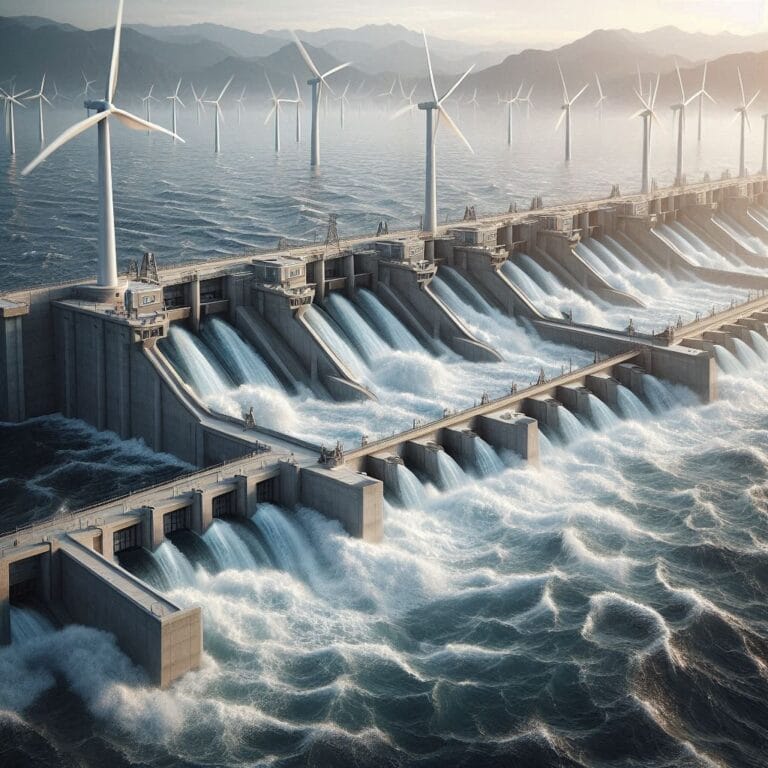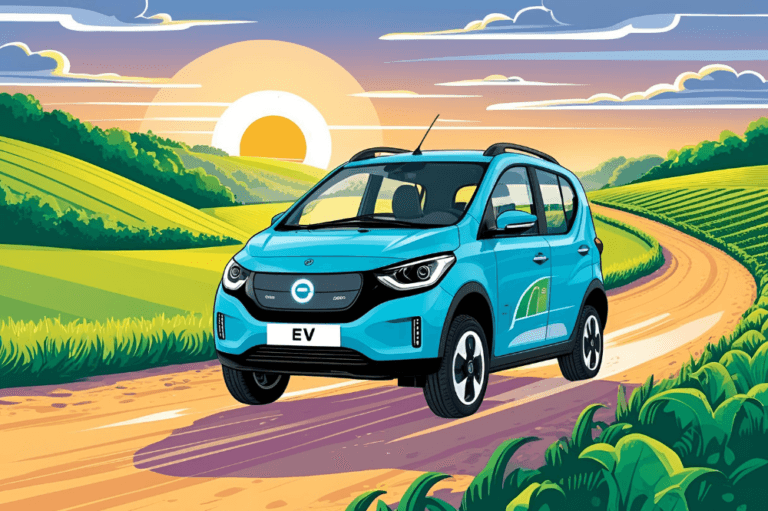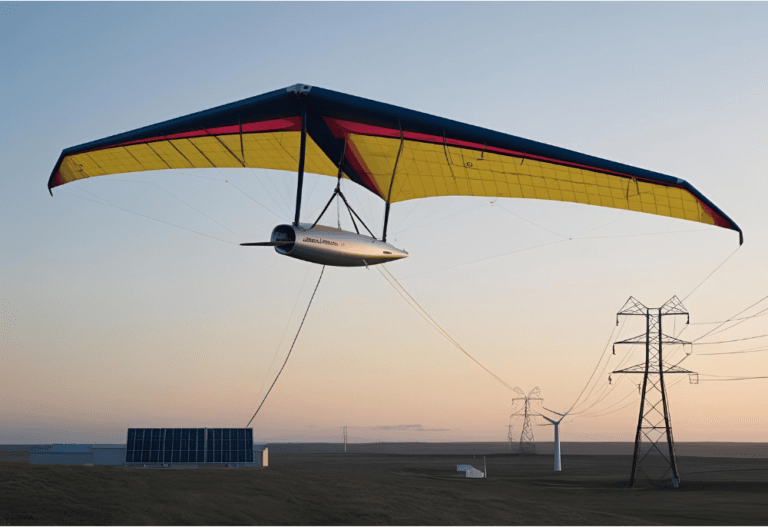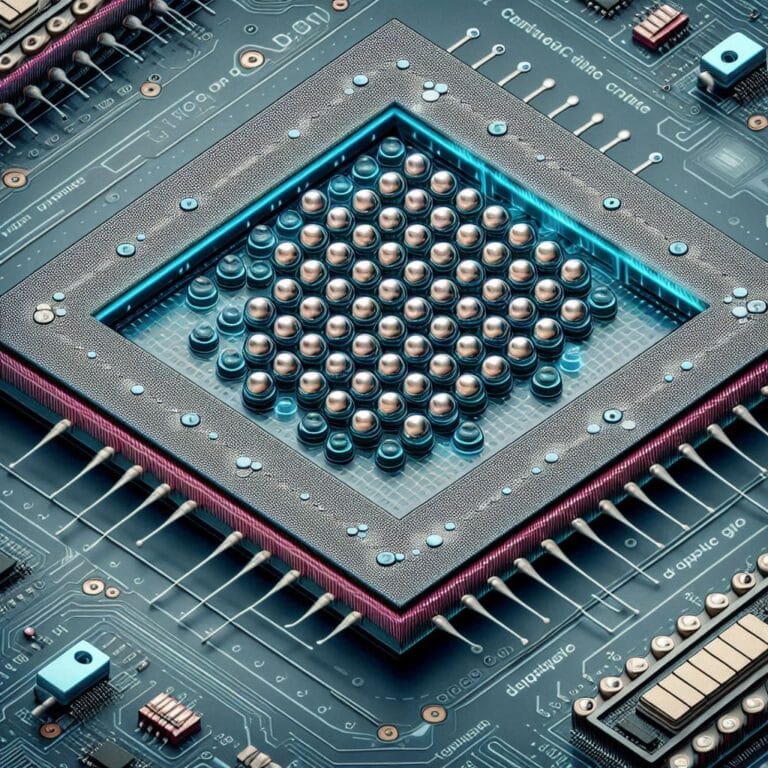
Introduction- Invention of Electric Motor
An electric motor is a mechanical device designed to convert electrical energy into mechanical energy. It achieves this transformation by utilizing the electromagnetism principles of interaction between electric currents and magnetic fields. Electric motors are widely used in a multitude of applications, from powering household appliances to driving industrial machinery and transportation systems.
The invention of electric motor marked a pivotal moment in the history of technology. It was a breakthrough that transformed the way we live, work, and play. In this blog, we will delve into the fascinating journey of the electric motor, from its humble beginnings to its profound impact on the Industrial Revolution, as well as explore the different types of motors that have evolved over time.
The Birth of the Electric Motor (Historical Timeline)
The electric motor, like many technological marvels, has a rich history that can be traced back to the pioneering experiments with electricity in the 18th century. Here are some key milestones in the development of the electric motor:
Early Experiments with Electricity (18th Century)
1740s: Andrew Gordon and the Electrostatic Motor
While not directly contributing to the development of the electric motors we know today, the experiments conducted by Scottish monk Andrew Gordon in the 1740s laid important groundwork for understanding electrical phenomena. Gordon’s work primarily focused on electrostatic principles, attempting to create devices that could convert electrical energy into mechanical motion using charged objects and the attraction or repulsion of charged particles. These early attempts, though rudimentary, showcased the potential of electricity for generating motion. (Source: “The History of Electrical Engineering” by Russell M. Brown)
1752: Benjamin Franklin and the Electrifying Kite
American polymath Benjamin Franklin’s iconic kite experiment in 1752, while not directly related to electric motors, played a crucial role in establishing the electrical nature of lightning. This groundbreaking experiment provided valuable insights into the properties of electricity and paved the way for further exploration of its potential applications. (Source: “Benjamin Franklin: An Autobiography”)
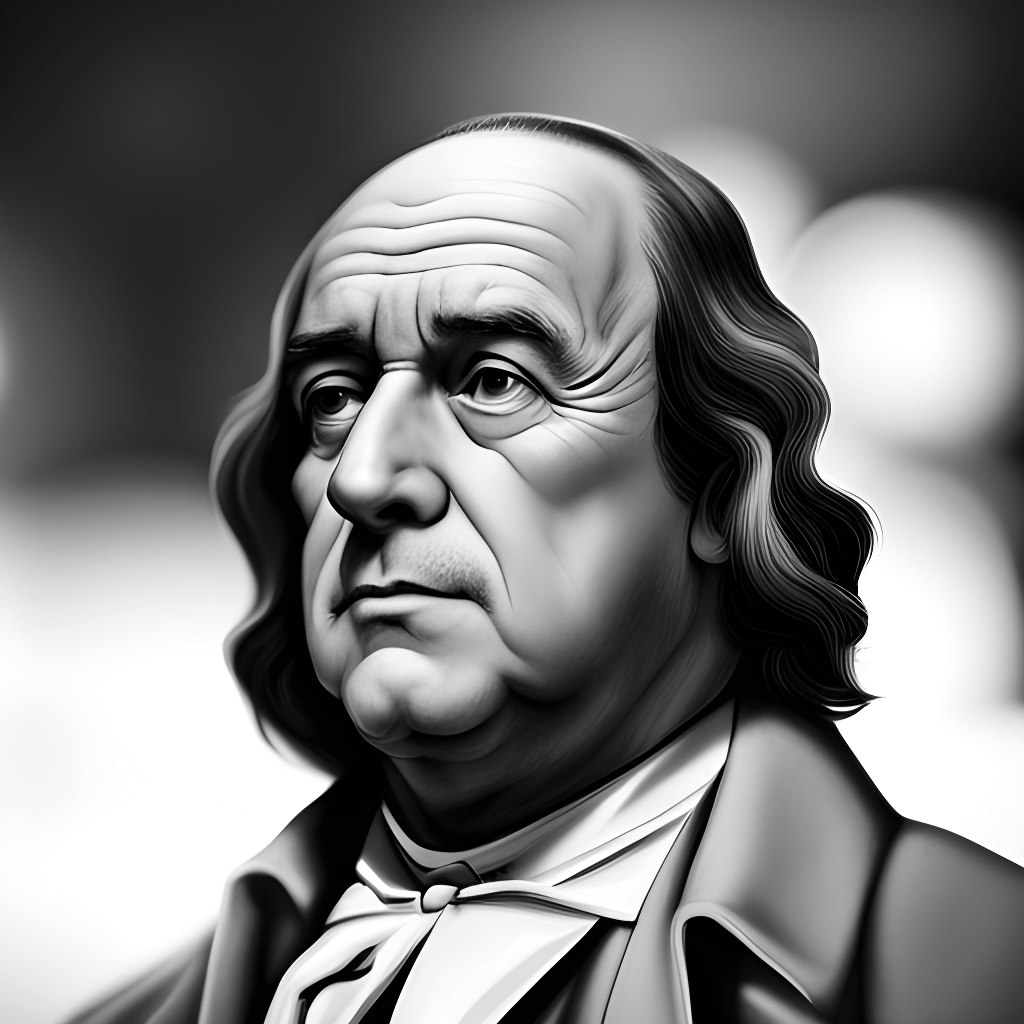
While Franklin’s work was foundational for understanding electricity, it wasn’t focused on electric motors.Luigi Galvani’s experiments in the late 18th century involving frog muscles twitching when exposed to electric sparks hinted at the possibility of harnessing electricity for motion.
Alessandro Volta’s invention of the voltaic pile, a primitive battery, in 1800, provided a more reliable source of electricity for further experimentation.
1791: Luigi Galvani and the Twitching Frog Legs
The late 18th century witnessed Italian scientist Luigi Galvani’s fascinating experiments involving frog muscles twitching when exposed to electric sparks. These observations, while initially sparking controversy, hinted at the possibility of harnessing electricity to stimulate and potentially control muscle movement. This concept, though not directly leading to electric motors, laid the foundation for future explorations into the connection between electricity and biological processes. (Source: “Luigi Galvani: Biography” by Istituto Superiore di Sanità).
1800: Alessandro Volta and the Voltaic Pile: A Reliable Power Source
The invention of the voltaic pile by Italian physicist Alessandro Volta in 1800 marked a significant turning point. This primitive battery provided a reliable source of electricity, enabling further experimentation and development in various fields, including electromagnetism and, consequently, the path toward electric motors. (Source: “Volta and the Electric Battery” by William Walker)
Further Exploration:
19th Century:
1820: Hans Christian Oersted – Bridging the Gap Between Electricity and Magnetism
The Spark of Inspiration:
- Danish physicist Hans Christian Oersted (1777-1851) was not actively seeking to invent an electric motor. His primary focus lay in understanding the nature of heat. However, during a seemingly ordinary lecture on April 21st, 1820, serendipity struck. While demonstrating the effects of electricity on a compass needle, Oersted observed a deflection of the needle even when the electrical circuit was not directly connected. This unexpected observation marked a pivotal moment in scientific history, establishing the fundamental connection between electricity and magnetism.
Impact on Electric Motor Development:
- Oersted’s discovery, documented in his paper “Experiments on the Effect of Currents of Electricity on the Magnetic Needle,” laid the groundwork for future advancements in electromagnetism. His work provided the foundation for understanding how electric currents could influence magnetic fields, a crucial principle upon which electric motors operate.
Source:
- Oersted, H. C. (1820). Experiments on the effect of currents of electricity on the magnetic needle. Philosophical Magazine, 60(354), 274-276.
1820: André-Marie Ampère – Quantifying the Magnetic Force
Building upon Oersted’s Legacy:
- French mathematician André-Marie Ampère (1775-1836) was deeply intrigued by Oersted’s findings. He embarked on a series of rigorous experiments to quantify the relationship between electric currents and the magnetic fields they generate.
Ampère’s Law:
- Through his meticulous investigations, Ampère formulated Ampère’s Law in 1820. This fundamental law describes the magnetic field produced by a current-carrying conductor and provides a quantitative understanding of the interaction between electricity and magnetism.
Significance for Electric Motors:
- Ampère’s Law played a crucial role in the development of electric motors. It provided a theoretical framework for understanding how the flow of electricity in a conductor could create a force that could be harnessed to produce rotational motion, a key principle behind electric motors.
Source:
831: Michael Faraday – The Father of Electromagnetic Induction
The Eureka Moment:
- British scientist Michael Faraday (1791-1867) is widely regarded as the “father of electromagnetic induction”. Driven by a relentless curiosity about electricity and magnetism, he conducted numerous experiments throughout the 1820s and 1830s. In 1831, his relentless pursuit of knowledge led to a breakthrough discovery.
Electromagnetic Induction:
- Through his meticulous experimentation, Faraday demonstrated that a changing magnetic field could induce an electric current in a nearby conductor. This phenomenon, known as electromagnetic induction, became the cornerstone of electric motors and generators.
- Paving the Way for Practical Motors: Faraday’s discovery of electromagnetic induction provided the missing piece in the puzzle of electric motor development. It offered a practical way to convert electrical energy into mechanical motion, paving the way for the creation of more efficient and powerful electric motors in the years to come.
Source:

1831: Faraday’s Generator: The First Step Towards the Motor:
Building upon his discovery of electromagnetic induction, Faraday constructed the first electric generator in 1831. This device, also known as a disc dynamo, consisted of a copper disc rotating between the poles of a magnet, generating an electric current as the disc cut through the magnetic field. While not directly an electric motor, Faraday’s generator showcased the conversion of mechanical energy into electrical energy, a principle crucial for the development of electric motors. (Source: Institution of Engineering and Technology. (2011). Faraday, Maxwell and the Electromagnetic Field: Key Classics from the History of Science. Routledge)
These pivotal discoveries in the early 19th century, from Oersted’s spark of electromagnetism to Faraday’s groundbreaking work on induction and his prototype generator, laid the foundation for the development of the electric motor. These advancements paved the way for future inventors to refine and build upon these fundamental principles, ultimately leading to the ubiquitous technology that shapes our world today.
Further Exploration:
- National Museum of Mathematics
- American Society of Mechanical Engineers
- Smithsonian Institution Libraries
1834: Thomas Davenport and the “Electro-Magnet and Mechanics Intelligencer”
The Man Behind the Motor:
- Thomas Davenport, a self-taught blacksmith from Vermont, wasn’t just an inventor; he was a visionary entrepreneur. Inspired by Joseph Henry’s electromagnets, he tirelessly experimented, eventually building a working electric motor in 1834. This motor, powered by a battery and featuring a rotating drum with a commutator, could propel a small car on a track. (Source: Smithsonian Institution Archives)
Beyond the Invention:
- Davenport didn’t stop at just building the motor. He recognized its potential and actively sought to commercialize it. He even published a journal called “The Electro-Magnet and Mechanics Intelligencer” (1840), promoting the use of electric motors and advocating for advancements in battery technology. However, limitations in battery power and the dominance of steam engines at the time hindered the widespread adoption of his invention. (Source: Edison Tech Center)
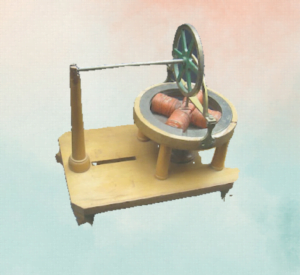
1830s-1840s: Refining the Design – Sturgeon, Henry, and Beyond
William Sturgeon and the Electromagnet:
- While not directly credited with building a working motor, British physicist William Sturgeon’s invention of the electromagnet in 1825 played a crucial role. This powerful magnet, significantly stronger than existing models, provided the foundation for developing more efficient electric motors. (Source: Science Museum Group)
Joseph Henry and the Electromagnetic Theory:
- American physicist Joseph Henry, a contemporary of Davenport, also made significant contributions. He conducted extensive research on electromagnetism, laying the theoretical groundwork for future motor development. His work on electromagnetic induction, though not directly leading to a motor, proved essential for understanding the underlying principles. (Source: National Air and Space Museum)
Beyond Sturgeon and Henry:
- Several other inventors during this period contributed to refining early electric motor designs. Notably, Moritz Hermann Jacobi in Germany developed a motor with a rotating disc in the 1830s, showcasing further advancements in the technology. (Source: Britannica)
Mid-19th Century: The Revolving Armature Motor and the Rise of DC Motors
William Ritchie and Pacinotti:
- These inventors, working independently, played a pivotal role in developing the revolving armature motor in the mid-19th century. This design featured a rotating armature within a magnetic field, marking a significant step towards modern DC motors. Ritchie’s work in Scotland and Pacinotti’s research in Italy, though geographically separated, converged on the same concept, paving the way for future advancements. (Source: IEEE Global History Network)
1866: Werner von Siemens and the Practical Dynamo
The Dynamo and its Connection:
- German inventor Werner von Siemens’ development of the first practical DC dynamo in 1866 wasn’t just about generating electricity. This invention, essentially a motor operating in reverse, played a crucial role in powering electric motors themselves. The dynamo provided a more reliable and efficient source of electricity, further enabling the development and application of electric motors. (Source: Siemens Historical Institute)
References:
- Smithsonian Institution Archives
- Science Museum Group
- National Air and Space Museum
- Britannica-Rotor Electric Motor
- IEEE Global History Network
- Siemens Historical Institute
The tale of the electric motor is not just a story of scientific innovation, but also a captivating narrative of competing visions, intellectual clashes, and ultimately, the shaping of our modern world. Two figures stand out in this saga: Thomas Edison and Nikola Tesla, each leaving an indelible mark on the development and application of this transformative technology.
1879: Thomas Edison and the Dawn of Practical Electricity
Thomas Edison, already a celebrated inventor by the late 19th century, set his sights on harnessing electricity for everyday use. He envisioned a centralized power grid delivering electricity to homes and businesses, and the electric motor was a crucial component in this vision.
Edison, known for his pragmatic approach, focused on developing a direct current (DC) motor. He believed DC, with its constant flow of electricity, was more reliable and easier to control. In 1879, he unveiled his improved DC motor, a more efficient and commercially viable design compared to earlier models. This marked a significant step forward, paving the way for the installation of the world’s first commercial power plant in New York City in 1882, powered by Edison’s DC generators and motors.
Historical References:
- Matthew Josephson, Edison: A Biography (1990)
- “The Electrifying Life of Thomas Edison” (PBS Documentary, 2011)
Websites:
1880s-1890s: Nikola Tesla and the AC Revolution
Nikola Tesla, a brilliant and visionary inventor, emerged with a different perspective. He championed alternating current (AC), which could be transmitted over long distances with minimal energy loss, unlike DC. Tesla believed AC held the key to widespread electrification, reaching beyond urban centers and powering rural communities.
Tesla’s induction motor, invented in the 1880s and 1890s, utilized AC and eliminated the need for a commutator, a complex and wear-prone component in DC motors. This design offered several advantages, including simplicity, reliability, and higher efficiency. However, convincing established players like Edison of AC’s potential proved challenging.
Less Common Information:
- The conflict between Edison and Tesla, often referred to as the “War of Currents”, was largely driven by their differing visions for the future of electricity, not personal animosity.
- While Edison is credited with the light bulb, his design used a high-resistance filament, requiring significant power and generating considerable heat. Tesla, on the other hand, advocated for more efficient fluorescent lighting, which laid the groundwork for modern lighting technologies.
Historical References:
- Margaret Cheney, Tesla: Man Out of Time (2011)
- “Tesla vs Edison: Battle of the Currents” (History Channel Documentary, 2008)
Websites:
20th Century:
The 20th century witnessed the continuous evolution and diversification of the electric motor, solidifying its position as a cornerstone of modern technology. This era saw the emergence of various specialized motor types, each catering to specific applications and performance demands:
- Synchronous motors: Known for their precise speed control, these motors are widely used in industrial applications like clock drives, conveyors, and generators.
- Stepper motors: Stepper motors are crucial in robotics, CNC machines, and 3D printers, offering incremental movement and precise positioning.
- Brushless DC motors (BLDC motors): Combining the efficiency and controllability of DC motors with the durability and simplicity of AC motors, BLDC motors are increasingly popular in electric vehicles, drones, and power tools.
Beyond diversification, the 20th century saw significant advancements in:
- Materials: The use of rare-earth magnets, high-strength alloys, and advanced composites led to lighter, more efficient, and powerful motors.
- Control systems: The integration of microprocessors and electronic controllers enabled precise motor control, improved efficiency, and enhanced functionality.
- Manufacturing processes: Advanced manufacturing techniques like automation and 3D printing facilitated the production of more complex and cost-effective motors.
Looking ahead, the future of electric motors is brimming with exciting possibilities:
- Focus on efficiency and sustainability: Ongoing research and development efforts aim to create even more efficient motors with reduced energy consumption and environmental impact. This includes exploring alternative materials and innovative designs to minimize energy losses.
- Miniaturization and integration: The trend towards smaller, lighter, and more integrated motors is gaining momentum, driven by the miniaturization of electronics and the growing demand for compact and portable devices.
- New applications: Electric motors are finding their way into unprecedented applications, from medical robotics and wearable devices to autonomous vehicles and renewable energy systems.
Examples of ongoing research and development:
- Switched reluctance motors: These motors offer high efficiency and simplicity but require advanced control systems. Research is focused on improving control algorithms and reducing noise generation.
- Permanent magnet synchronous motors (PMSMs): Offering high power density and efficiency, PMSMs are increasingly used in electric vehicles. Research is focused on developing cost-effective and sustainable permanent magnet materials.
- Integrated motor drives: Combining motor and control electronics into a single unit can improve efficiency, reduce size and weight, and simplify system design. Research is focused on developing high-performance and cost-effective integrated solutions.
Further Exploration:
- Institute of Electrical and Electronics Engineers (IEEE)
- Office of Energy Efficiency & Renewable Energy (EERE)
- National Renewable Energy Laboratory (NREL)
Impact on Industrial Revolution:
Mechanization:
Prior to the widespread use of electric motors, factories heavily relied on manual labor and water or steam power for mechanization. The introduction of electric motors brought a new level of efficiency and flexibility to industrial processes. These motors powered conveyor belts, assembly lines, and other machinery, automating previously labor-intensive tasks.
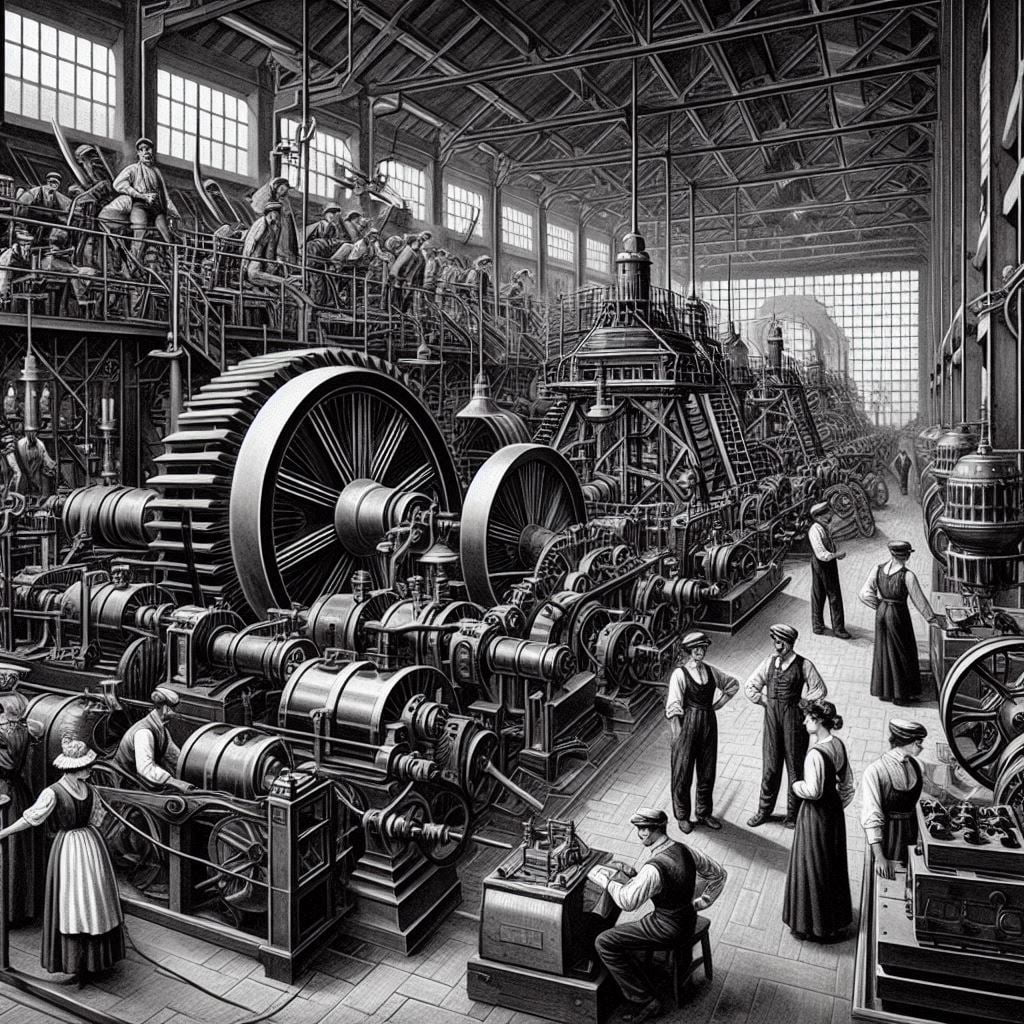
Increased Productivity:
The use of electric motors significantly increased productivity in factories. Machinery powered by electric motors could operate continuously and consistently, allowing for higher output and reduced labor costs.
Flexibility and Precision:
Electric motors provided greater control over manufacturing processes. They could be easily adjusted and fine-tuned for different tasks, making it possible to produce a wider range of products with precision and speed.
Transformation of Transportation:
Electric motors revolutionized transportation during the Industrial Revolution, leading to significant advancements:
Urban Transportation:
Electric motors powered streetcars and trams, providing clean and efficient urban transportation. This development transformed cities by making them more accessible and less reliant on
horse-drawn vehicles.
Elevator Technology:
Electric motors enabled the practical use of elevators, which revolutionized the construction of tall buildings. Elevators not only made vertical expansion possible but also improved urban
density and accessibility.
Railways and Electric Trains:
Electric motors were integrated into railway systems, giving rise to electric trains. Electric railways were cleaner, more efficient, and often more reliable than their steam counterparts, contributing to the expansion of rail networks.
Revolutionizing Household Life:
Electric motors had a profound impact on household life during the Industrial Revolution:
Home Appliances:
The widespread availability of electric motors led to the development of various home appliances. Washing machines, vacuum cleaners, and refrigerators transformed domestic chores, making them less time-consuming and more convenient.
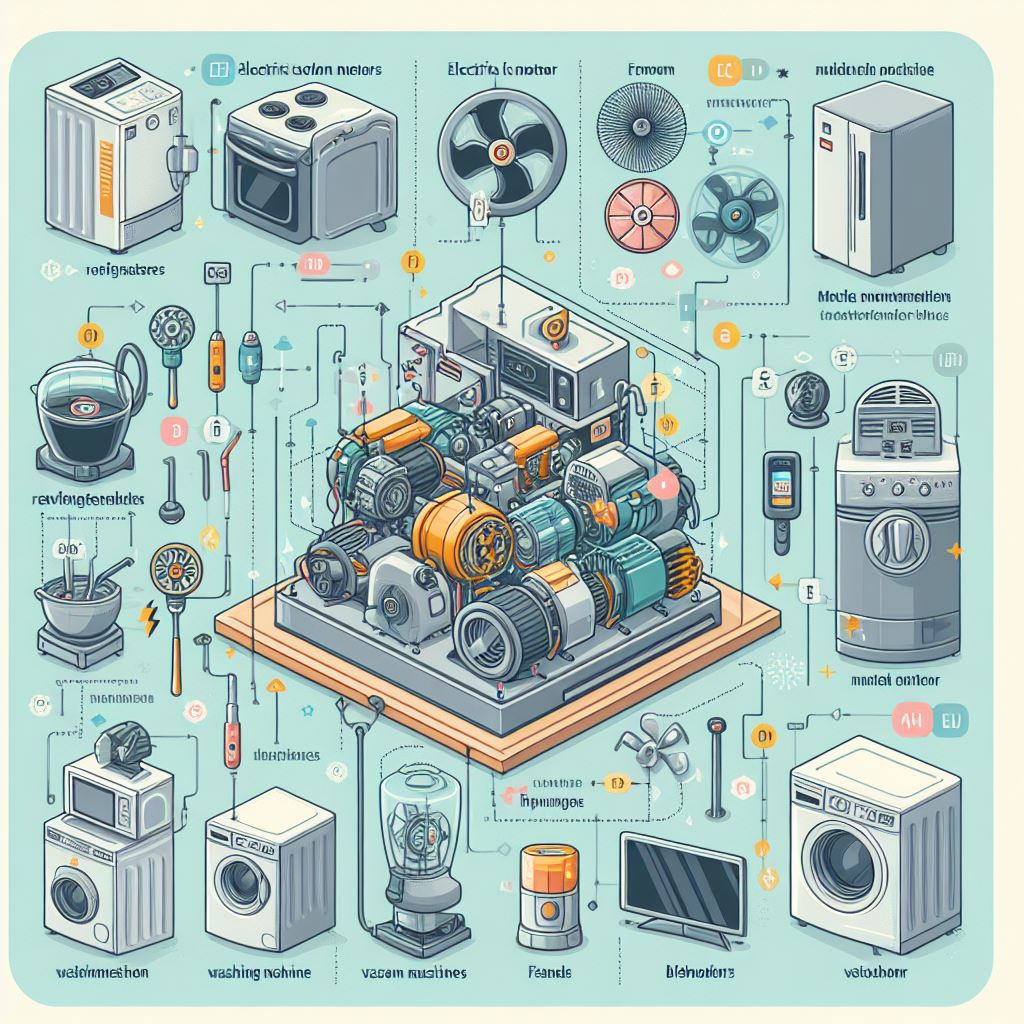
Lighting and Fans:
Electric motors were also used in lighting systems and electric fans, providing improved comfort and convenience in homes.
Advancements in Mining and Heavy Industry:
Electric motors brought significant advancements to the mining and heavy industry sectors:
Mining Equipment:
In mining, electric motors replaced steam engines, offering a more efficient and versatile power source for hoisting, drilling, and other essential operations. This transition led to increased
safety and productivity in mining operations.
Metal and Steel Production:
Electric motors played a crucial role in metal and steel production, powering rolling mills, pumps, and other machinery essential for processing raw materials and producing finished goods.
Types of Electric Motors
The world of electric motors offers a diverse range of options, each catering to specific needs and applications. Let’s explore some common types in greater detail, examining their features, working principles, and typical uses:
AC Motors (Alternating Current Motors):
a) Induction Motors:
- Features: Simple design, robust construction, reliable operation, low maintenance requirements, good starting torque, and variable speed control through external devices.
- Working Principle: Utilizes the principle of electromagnetic induction. A rotating magnetic field created by the stator windings induces current in the rotor conductors, causing it to rotate in the opposite direction of the magnetic field.
- Subtypes: Squirrel-cage induction motors (common type with a rotor resembling a squirrel cage), and wound-rotor induction motors (offer more starting torque control).
- Applications: Fans, pumps, compressors, conveyors, power tools, industrial machinery, washing machines, refrigerators, and air conditioners.
b) Synchronous Motors:
- Features: Precise speed control, high efficiency, constant speed operation, self-starting capability.
- Working Principle: The rotor’s magnetic field locks onto the rotating magnetic field of the stator, ensuring synchronous rotation at the same speed as the AC power supply.
- Subtypes: Round-rotor synchronous motors, salient-pole synchronous motors.
- Applications: Generators, clocks, timers, turntables, some industrial machinery requiring constant speed, high-power applications.
DC Motors (Direct Current Motors):
a) Brushed DC Motors:
- Features: Simple and affordable design, easy speed control, high starting torque, readily available.
- Working Principle: Commutator and brushes reverse the current flow in the rotor windings, creating a continuous rotating motion.
- Subtypes: Series-wound DC motors (high starting torque), shunt-wound DC motors (consistent speed), compound-wound DC motors (combination of series and shunt characteristics).
- Applications: Toy cars, power tools, household appliances (fans, drills, vacuum cleaners), robotics (low-power applications).
b) Brushless DC Motors (BLDC Motors):
- Features: High efficiency, low maintenance (no brushes), quiet operation, precise speed control, wider speed range.
- Working Principle: The Electronic controller replaces the commutator and brushes, using sensors to determine rotor position and electronically switch the current in the windings to achieve the desired rotation.
- Subtypes: Sensorless BLDC motors (use back-EMF for rotor position sensing), sensored BLDC motors (use Hall effect sensors for precise position control).
- Applications: Drones, electric vehicles, robotics, high-performance power tools, medical devices, disk drives, industrial automation.
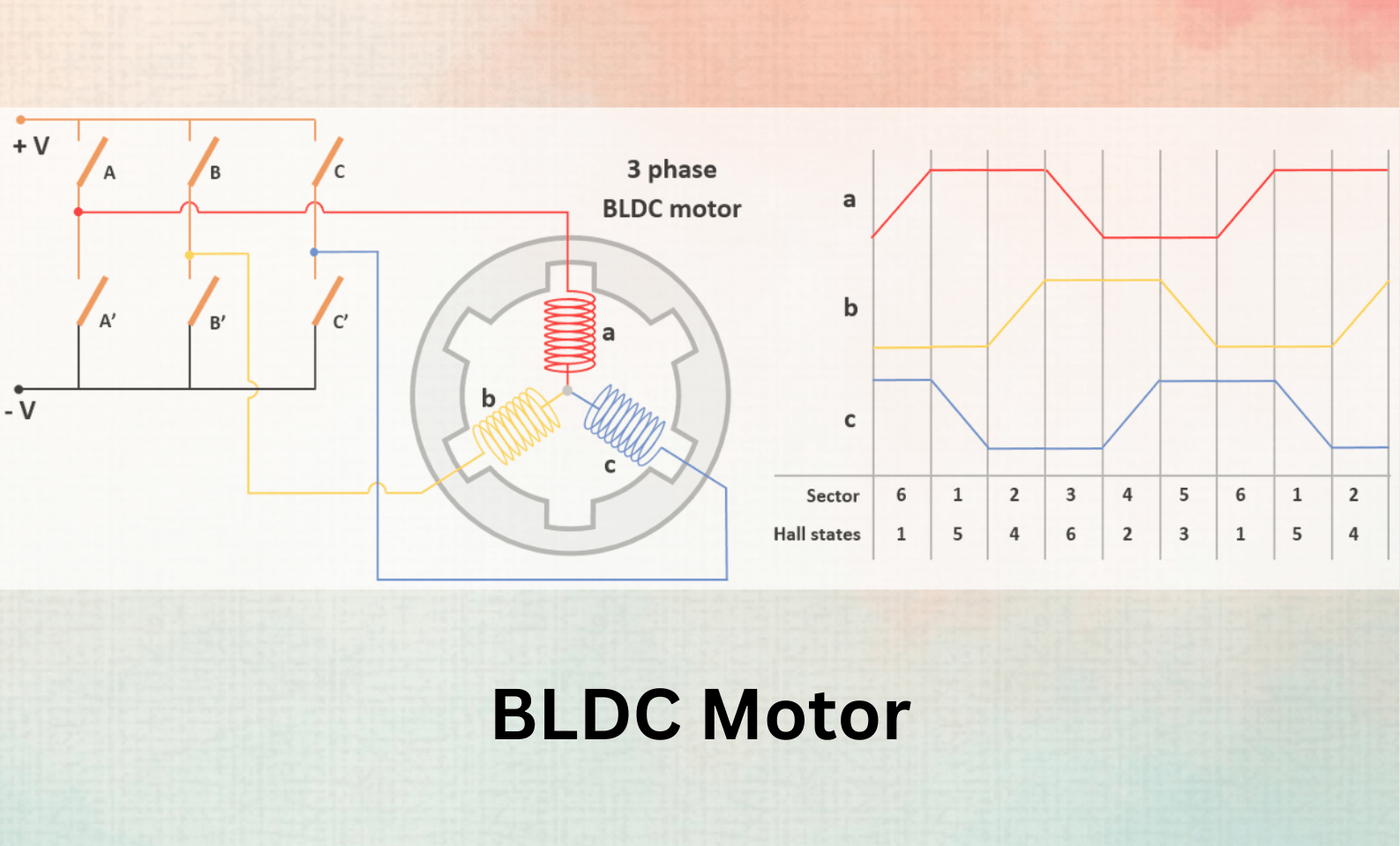
Special Purpose Motors:
a) Stepper Motors:
- Features: Precise angular positioning, ability to hold position without power, good torque at low speeds.
- Working Principle: Operate in discrete steps, receiving electrical pulses that energize specific coils in the stator, causing the rotor to step to a specific position.
- Subtypes: Permanent magnet stepper motors, variable reluctance stepper motors.
- Applications: CNC machines, 3D printers, plotters, robotics (positioning tasks), automated assembly lines.
b) Linear Motors:
- Features: Direct linear motion, high speed and acceleration, no mechanical transmission components (gears, belts), clean and efficient operation.
- Working Principle: Utilize moving magnetic fields to generate linear force that propels the mover along a straight track.
- Subtypes: Electrodynamic linear motors, permanent magnet linear motors.
- Applications: High-speed trains (maglev systems), amusement park rides, material handling systems, factory automation, medical equipment (linear accelerators).
Understanding these details empowers you to make informed choices when selecting the most suitable motor for your specific application, considering factors like power requirements, speed control needs, efficiency, and environmental considerations.
Conclusion
The invention and evolution of the electric motor represent a remarkable journey of human innovation and engineering prowess. Numerous contributors like Andrew Gordon, Benjamin Franklin, Michael Faraday, Thomas Davenport, Thomas Edison and Nikola Tesla can be credited behind this wonderful invention From the early experiments with electricity to the diverse range of motors we have today, this technology has reshaped industries, improved our lives, and continues to drive progress in the modern world. The electric motor is not just a historical achievement; it remains a symbol of our ability to harness the power of nature for the betterment of society.
Check out some of my other blog posts:

